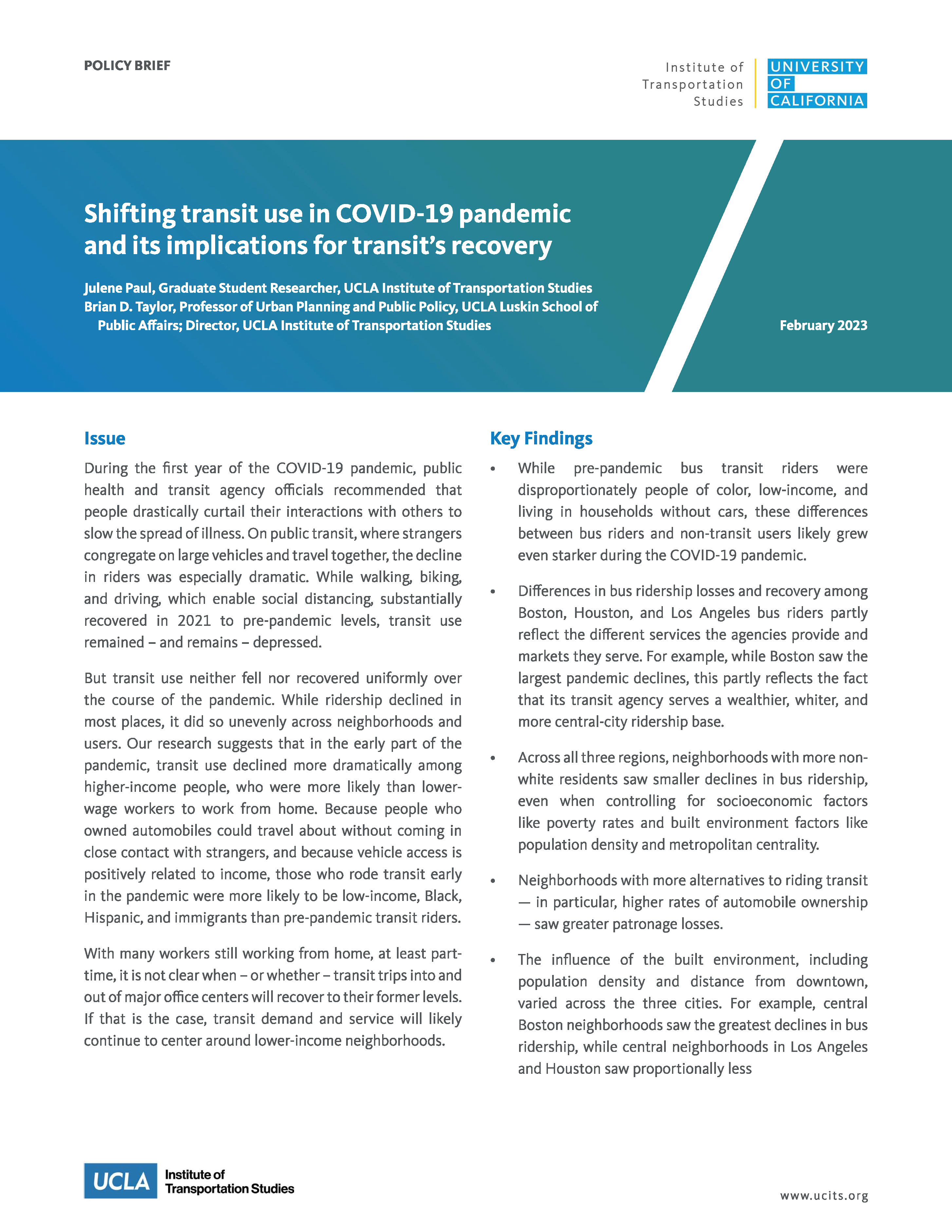Project ID:
LA2103Year Completed:
2023Funding Source:
Statewide Transportation Research ProgramProject Description
California’s metropolitan areas have invested heavily in improving and expanding public transit systems over the past half century, and particularly in this one. But despite demonstrable improvements in transit provision, ridership was eroding in many areas during the dozen years leading up to the COVID-19 pandemic, and in most places and on most systems in California since 2016. But these dips in ridership paled in comparison to the crash in patronage that coincided with the onset of the pandemic. By the fall of 2020, most transit systems had recovered to about half of their pre-pandemic ridership, but transit’s recovery largely stalled there, even as rates of driving, walking, and biking have mostly recovered to pre-pandemic levels. Research has shown that the riders who left transit in the pandemic tended to be higher income, better educated, more likely white or Asian, and with access to private motor vehicles. Spatial patterns of ridership have shifted dramatically as well, with downtowns and other major job centers losing the most riders, and low-income neighborhoods retaining the most riders. In net, the level, timing, and direction of transit travel have changed dramatically.
Publications

Brian D. Taylor (PI)
btaylor@ucla.edu
Research Team
Program Area(s):


